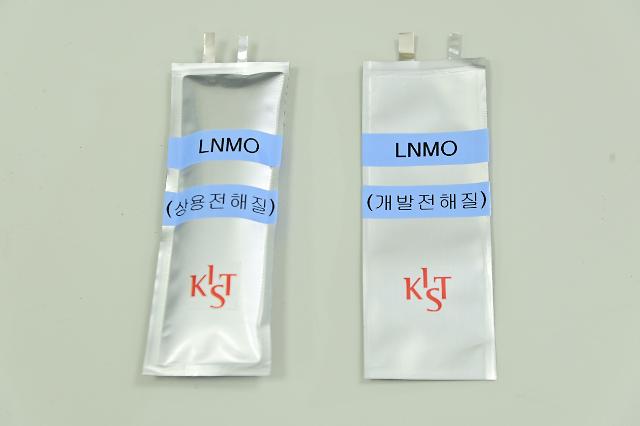
[Courtesy of KIST]
SEOUL -- A surge in the price of nickel and other metals used for lithium-ion electric vehicle batteries prompted researchers to utilize inexpensive manganese (Mn) without performance degradation. The of Mn-rich chemistry has attracted attention as a promising option to realize cathode materials with high economic sustainability, price competitiveness, and reasonable energy density.
The state-run Korea Institute of Science and Technology (KIST) said that its energy materials research team led by Hong Ji-hyun has discovered the cause of a rapid decrease in the life of batteries using manganese-based spinel cathode materials, creating a chance to commercialize new lithium batteries.
"Through this study, KIST presented a new methodology for commercializing manganese-based high-energy cathode materials," Hong said in a statement on December 20. Hong's research paper was published on the website of Advanced Energy Materials, a peer-reviewed scientific journal.
Among Mn-rich cathode materials, spinel lithium nickel manganese oxide (LNMO), or LiNi0.5Mn1.5O4, was seen as an attractive alternative to nickel (Ni)-rich layered oxides. LNMO can store more energy, and the simultaneous use of Ni and Mn multi-cation redox reactions in LNMO enables a high energy density.
But LiNi0.5Mn1.5O4 shows a non-negligible capacity fading during electrochemical cycling due to structural and chemical instabilities. Hong's team has revealed the potential-driven phase transition and decomposition of LiNi0.5Mn1.5O4 occurring at the cathode-electrolyte interface as a major cause of capacity fade.
"We unveiled the dynamic surface reconstruction in LNMO driven by a large potential change, reestablishing the failure mechanism of LNMO when simultaneously using nickel and manganese redox for high-energy storage," the research team said in its paper.
The LNMO surface transforms into a rocksalt structure at low voltage, followed by the dissociation of the rocksalt layer accompanied by electrolyte decomposition at high voltage, and the repeated interfacial evolution results in a rapid surge of charge-transfer impedance, inducing capacity decay as cycling progresses.
"We demonstrate that electrolyte formulation is an effective strategy to enhance the interfacial stability of LNMO, suppressing the spinel-to-rocksalt transformation. The stable electrochemical interface offers LNMO excellent performance in terms of cyclability, reversible capacity, and power density, which are superior to those obtained in commercial electrolytes," Hong's team said.
Copyright ⓒ Aju Press All rights reserved.



